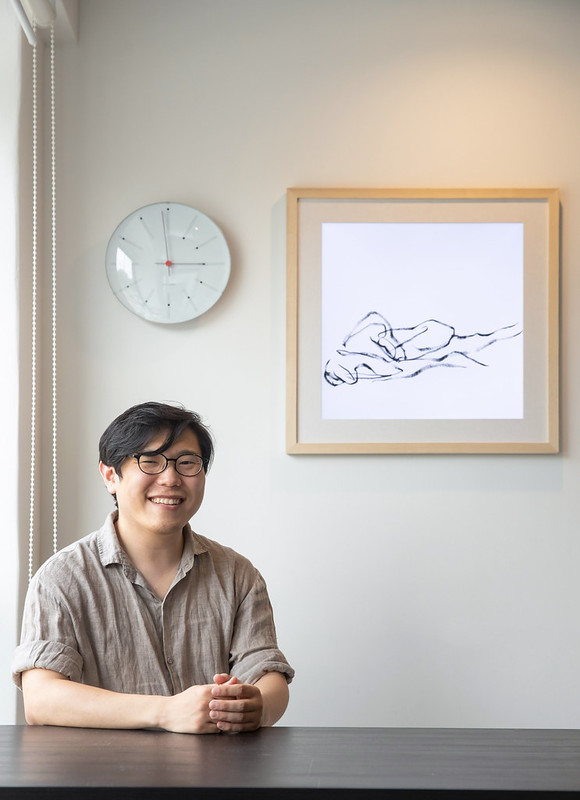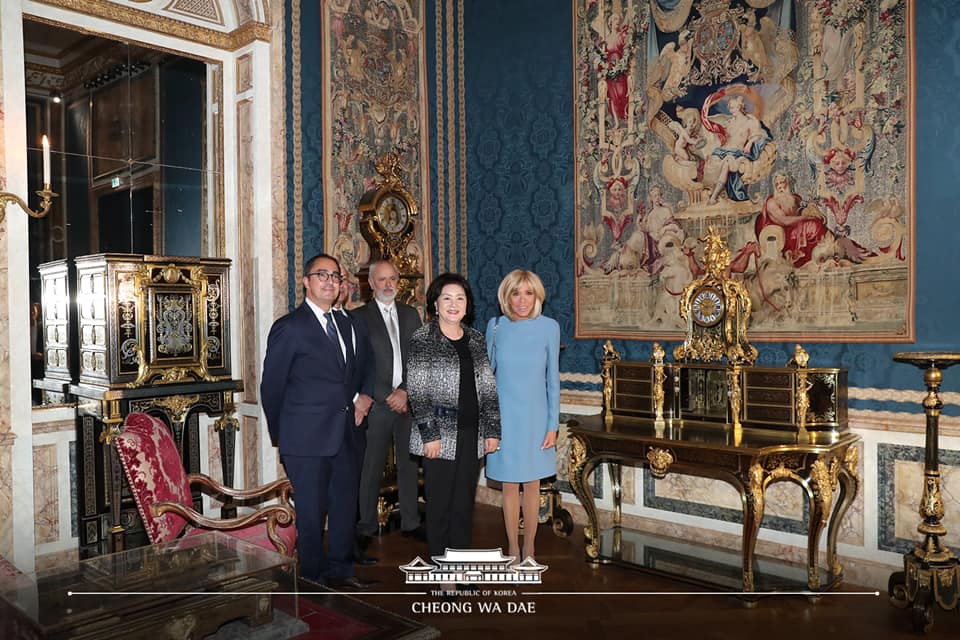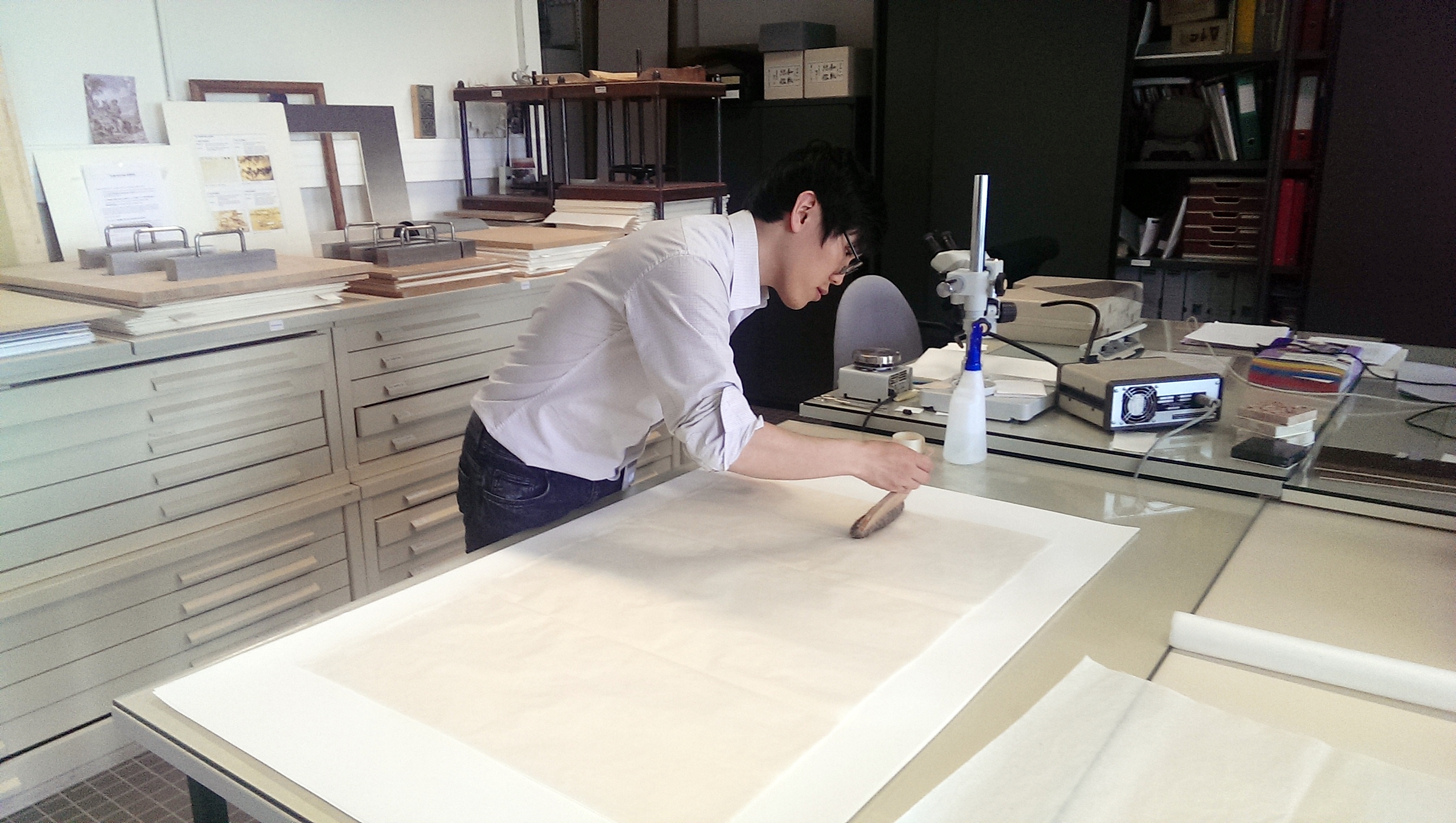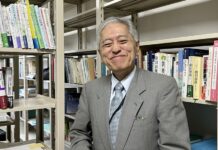
Kim Minjung, a key figure in the restoration of cultural properties at the Louvre in France using the traditional paper Hanji, on July 13 speaks to Korea.net at the latter’s studio in Seoul’s Jongno-gu District. (Kim Sunjoo)
By Xu Aiying and Yoon Hee Young
An exhibition on the history of the House of Bourbon is being held through September at the famous Louvre Museum in Paris. Displayed there are 18 portraits of the Bourbons drawn with pastels by French painters Jean-Honore Fragonard and Anicet Charles Gabriel Lemonnier.
The 18th-century works before the exhibition underwent a year of restoration that used the traditional Korean paper Hanji. As an essential material in the restoration of cultural properties, Hanji is used in various ways to fill cracks in furniture, paintings and sculptures to give new life to worn-out relics.
Kim Minjung, a professional restorer of cultural assets, dedicated himself to using Hanji for the Louvre project. He participated in the entire process of restoring the works from selecting paper to testing.
Speaking to Korea.net on July 13 at a studio in Seoul’s Jongno-gu District, he said in an interview, “That Hanji was used in restoring every work at the exhibition is highly meaningful,” adding, “The paper was acknowledged for its strong durability and outstanding quality and recognized as the best paper for the restoration.”
An aerospace engineering major at Paris 12 University, Kim had a life-changing experience after meeting historian Park Byeong-seon, who discovered Jikji Simche Yojeol, or “Anthology of Great Buddhist Priests’ Zen Teachings,” the oldest surviving book printed by movable metal type, and the Oegyujanggak Uigwe (Royal Protocols of the Joseon Dynasty). Kim helped with interpretation and translation during Park’s research and the writing of his book, and later changed his major to conservation and restoration of cultural properties and worked as a paid intern at the Louvre.

While visiting France with President Moon Jae-in in October 2018, first lady Kim Jung-sook (third from left) poses for a photo at the Louvre with French first lady Brigitte Macron (fourth from left) next to an 18th-century desk of King Maximilian II of Bavaria that was restored using the traditional paper Hanji made in Jeonju, Jeollabuk-do Province. (Cheong Wa Dae’s official Facebook page)
The Louvre recognized the excellence of Hanji when Ariane de la Chapelle, then head of the museum’s restoration team, read Kim’s master’s thesis on a comparison of traditional paper in Korea, Japan and China. The thesis said Hanji is adequate for use in restoration thanks to its contractibility and deterioration. Thus the museum in 2017 used Hanji made in Jeonju, Jeollabuk-do Province, for the first time to restore the 18th-century desk of King Maximilian II of Bavaria.
Kim said Hanji’s solidity was one reason for its use in the restoration project. “Hanji’s horizontal and vertical fibers intersect with one another, which makes the paper strong and advantageous to restoration,” he said. “Hanji complements the weakness of Japanese paper, whose fiber is easy ripped since it’s weaved only vertically.”
“Promoting the excellence of Korea’s traditional paper to the Louvre is only the beginning,” he added. “More museums will acknowledge Hanji since the Louvre, which leads the global industry for cultural asset restoration, has started to use it.”

Cultural asset restorer Kim Minjung uses Hanji while doing his job at the Louvre in Paris. (Kim Minjung)
Kim works in both Korea and France to prepare for the restoration of other cultural properties at the Louvre using Hanji. He is also working on an exhibition featuring the global history of paper slated for April next year at the Louvre’s annex in Abu Dhabi, the United Arab Emirates.
On his goals, he said, “I want to create an organized system to restore cultural properties using Hanji,” adding with a smile, “Also, I’d like to devote myself to cultivating professionals in Hanji restoration so that more museums worldwide can use the traditional paper.”
xuaiy@korea.kr























